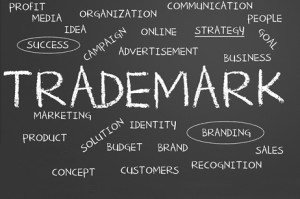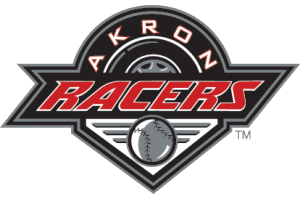In this blog post, Sunidhi, a student of the Rajiv Gandhi National University of Law, Patiala writes about the trademark class that applies to blogs, apps, and internet services. The blog post explains how the trademark can be registered with the Trademark Registrar.
Trademark means a mark capable of being represented graphically and which is capable of distinguishing the goods or services of one person from those of others and may include the shape of goods, their packaging, and the combination of colors.[1] In simple words, trademark means a mark, can be a symbol, logo, sign, word, graphic, design or a combination of these to distinguish a producer and his/her goods and services from that of another producer.
A Trademark assures the consumer of the authenticity and quality of the goods and services of a particular producer having a particular trademark. It protects the producer from the unauthorized use of its brand name by others. The trademarks can be renewed after expiry for a lifetime, but copyrights and patents cannot be renewed for a lifetime.
Trademark classification
The Schedule 4 to The Trade Marks Rules, 2001 classifies goods as well as services in 45 classes. The goods and services have also been classified into different classes. Class 1 to Class 34 deals with trademarks related to goods and Class 35 to Class 45 deals with service related trademarks. One trademark may be (in some cases it is necessary) classified into several other sub-classes.
The fee is correlated with each category, whether for initial application or renewal. A separate registration fee has to be paid for each class of goods or services to be registered. For example, if you wish to register a rope and yarn you have to pay two fees, levied for class 22 and class 23, respectively. You have to ensure that you choose right class for registration otherwise you will again have to start the registration process from beginning.
Class 41
The trademark class that applies to a blog, Android application or internet service for entertainment and education purposes is Class 41. Class 41 deals with education; providing of training; entertainment; sporting and cultural activities. This class contains mainly services rendered by persons or institutions in the development of the mental faculties of persons or animals, as well as services intended to entertain or to engage the attention of others.[2] Examples of items included in Class 41 are AKRON Racers (conducting athletic competitions), CEO Perspectives (executive workshops), MERCK Academy (educational services), etc.
This class particularly includes:
- The services including all kinds of education of humans or training of animals;
- The services meant for the entertainment, fun, amusement, relaxation or leisure of humans;
- The display of visual art or literary work to the audience for educational purposes or cultural purposes.
Blogs, apps or internet services fall into this category as they are either for educational or entertainment purposes. The ambit of this class is not restricted to institutions alone, but it also includes individuals. The use of the above-stated services provided by an individual or an institution will justify classification under this head because it will either develop the mental faculties of the user or will entertain the user.
Other services included in Class 41 are academics (education), movie theatre presentations, electronic desktop publishing, educational information, arranging and conducting of conferences, coaching, club services (educational or entertainment), providing online electronic publications/ music/videos, not downloadable, physical education, physical training, recording studio services, calligraphy services, news reporters services, publication of texts, other than publicity texts, publication of books, publication of electronic books and journals online, writing of texts other than publicity texts, etc.
Specimens for Class 41
The specimen of the service must indicate the use of a trademark in such a way that would be recognized by the customer as distinguishing the applicant’s services and express its source. When the mark is used in advertising services, the specimen must indicate a connection between the mark and the service. A specimen without any referring an association between the two is not valid. When the applicant is offering a service, he has no tangible product to attach the mark. Therefore, scanned copies of advertising and marketing materials (such as newspaper, etc.), letterheads and business cards indicating the trademark, a screen shot of the full web page if the mark is being prominently displayed on the homepage (for internet services), etc. will serve the purpose of a valid specimen.
Registration
The applicant, before applying for registration should check for the esistence of identical or similar trademarks. The documents required to be attached with trademark registration application are trademark logo, name and address of the applicant, trademark class, date of use of the trademark (if it used before registration), description of good or service to be trademarked and a power of attorney on Rs 100/- stamp paper. After collecting all required documents, an application for registration is drafted by the agent or attorney hired.
- Once it is found that no similar or identical trademarks are registered, the applicant can file the trademark registration application with the Registrar (in a prescribed manner).
- Within one or two days of registration, a trademark application allotment number is given to track the registration.
- Then the trademark is verified with the Vienna Codification.
- After verification with Vienna code, the trademark for which registration is sought is sent to a particular Trademark Officer, who will review the trademark application. He has the power to allow or object the trademark application.
- If the trademark has been objected by the officer, then the applicant has the right to appear before him and address his objection. If the applicant is not satisfied with his decision, then he can appeal to Intellectual Property Appellate Board.
- If the application is allowed by the officer, then it is published in the Trademark Journal, and if no one objects within 90 days of publication, then it will be registered within a few months.
- In case anyone objects the publication then he/she will be heard by the Trademark Hearing Officer. In the case of dissatisfaction, Intellectual Property Appellate Board can be approached.
Once all the objections are resolved, Trademark Certificate is issued, and the trademark is registered, granting the owner the exclusive use of the mark. Now, ® can be placed next to the trademark logo.
Footnotes:
[1] Section 2(zb), The Trademarks Act, 1999.
[2] Available at http://www.nolo.com/legal-encyclopedia/trademark-class-41-education-entertainment-services.html, last accessed on July 14, 2016, at 6:22 p.m.














This is very attention-grabbing, You’re an excessively professional blogger.
I’ve joined your feed and sit up for searching for more of your great post.
Additionally, I have shared your web site in my social networks
doing good job.
doing good job.
Trademarks are the important ones. If we are not securing in a proper way, then it will infringed by other peoples. This blog is really helpful to get the ideas about Trademark Classifications. Keep writing.
nice article.thank you for sharing.
nice article.thank you for sharing.
Thanks for sharing this info with us…
I dont know how i came on this page but really this website has a great content i hope you more of that in future.Thanks
This is a wonderful blog. This blog explain about trademark class is very nicely.
Thank You.